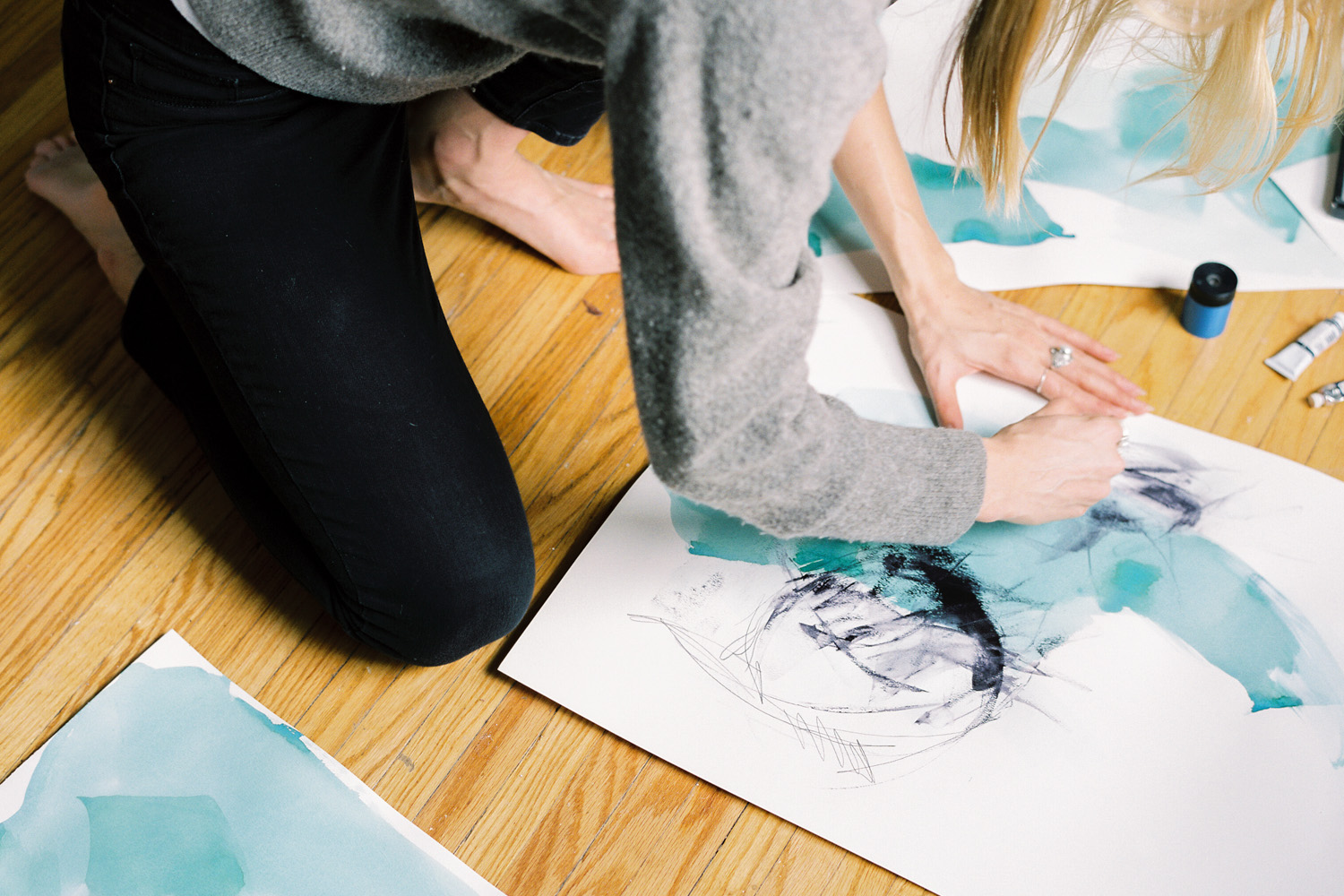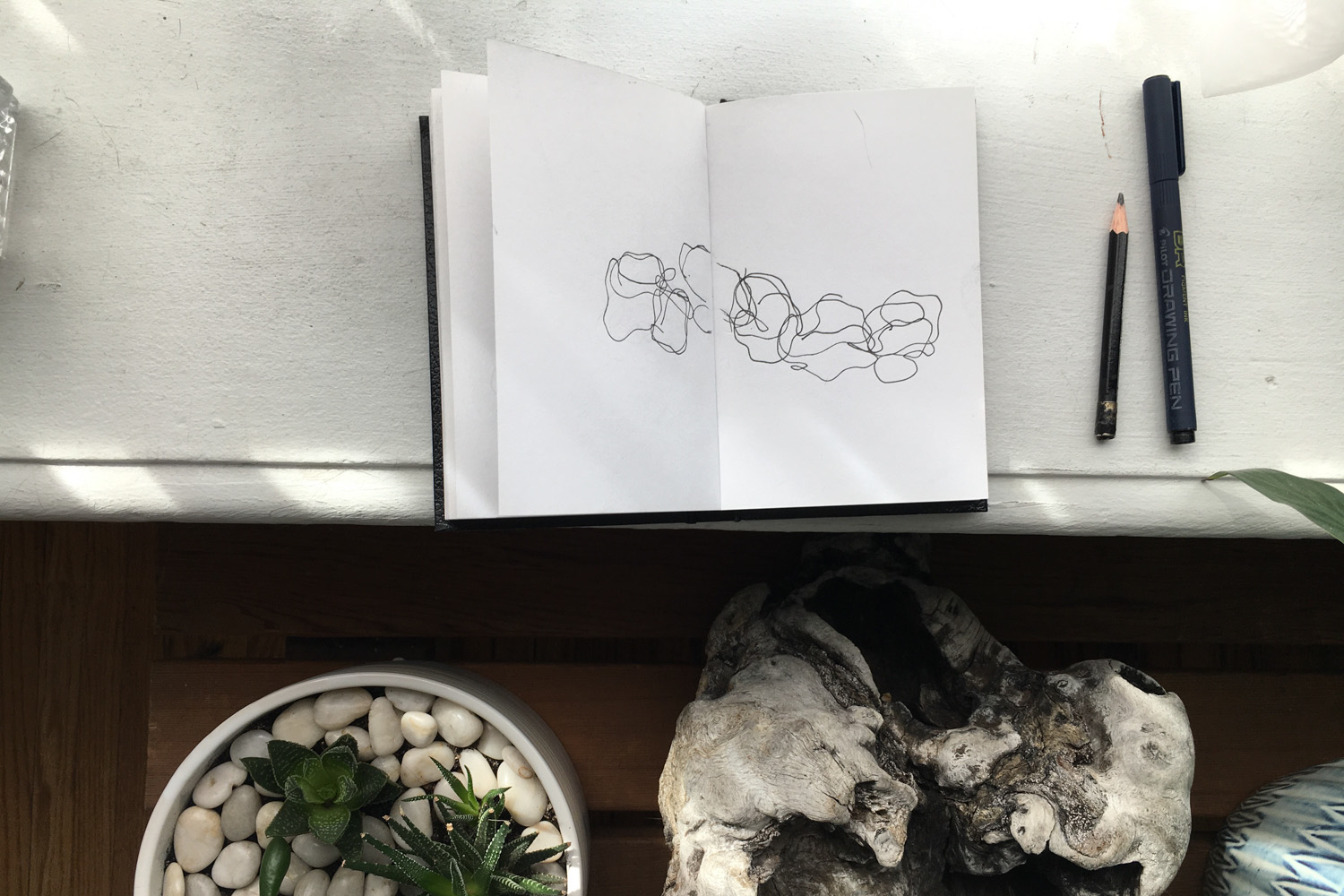Oksana Berda

Oksana Berda
Painter & Mixed Media Artist

Oksana – Portrait by Trisha Robinson
Banner Image by Trisha Robinson
Oksana Berda is a Toronto-based painter. Her work shows her keen sense of curiosity towards the natural world. Her soft color palette, precise use of geometry, and textures create an abstraction of the elements we already know. Gathering details from each landscape she studies, she reassembles the chosen elements in ghostly washes and braided lines.
Her recent work studies interactions between stone, sand, water, and wood. She began an on-going project this year, called Shorelines, that studies the beaches of Toronto. It’s mixed media: watercolor, acrylic, graphing pencil, pen and pastel, in 8×10 studies.
Throughout Oksana’s body of work there is a strong sense of familiarity, of something seen or felt and scattered by memory. There is a certainty to how she reassembles the landscapes she studies. Oksana is able to break down forms and patterns into a looser geometry, allowing them to unfold like origami and using them as metaphors to describe a search for something that may never be found, but must be pursued nonetheless.
Find out more, in Oksana’s words:
I’m drawn to the water for many reasons. I grew up playing on the coast of the Baltic, so the shore feels like home. Being by a body of water is also the surest way for me to feel the sublime. The wind playing across the surface of the water and the light picking up on the ripples with vast and complicated blue stretching across to the left, the right and beyond – I can almost feel my own heart stop at times.

Photo by Trisha Robinson
I work obsessively in series. I keep going until something gives – like running out of paint, or energy, or focus. There are certain pieces that I will finish on the same day and others that will take weeks or even months. I relate to mountaineers and their approach to climbing. They may try to climb the same mountain a few times before reaching summit and it’s based on instinct and the individual calculation of risk factors. Some pieces are like these mountains – I’m exploring something complicated and unknown to me and at times and I have to turn back and accept that I will have to try again later.
Some pieces are like these mountains – I’m exploring something complicated and unknown to me and at times and I have to turn back and accept that I will have to try again later.
Having accepted this as my process, I have learned to give those works the space they require. This I think might be one of the biggest challenges I am facing constantly in my art practice. It’s hard to release the need to control the process or the expectation of results. It is agonizing and makes me dig deeper each time so that I can strip away another layer of my ego and continue to just work.

One of my mentors gave me the best piece of advice. He said, “Draw in the dark.” One of the principles he follows is that: “You, the artist are not the medium, the medium itself is the medium.” Drawing in the dark or blindfolded helps me strip my desire to control and to achieve some kind of an end. When I’m lost, it’s because I am looking for an ending or expecting a preconceived result and not focusing on the process. The only thing I can really control and my ability to let go of control.
I noticed that knowing when to pull back, knowing how not to over-compensate in one of my paintings reflects what I’m going through as a young woman. I actively have to check on myself and be reminded that I don’t need to do and be everything all the time; I am everything I need to be already. The simplest version of me is the truest me. The paintings that capture this are my strongest.

Oksana in her element – Photo by Trisha Robinson
I don’t need to do and be everything all the time; I am everything I need to be already. The simplest version of me is the truest me. The paintings that capture this are my strongest.
- Photos by Trisha Robinson
I started an on-going project earlier this spring, called Shorelines. I use mixed media: watercolor, acrylic, graphing pencil, pen and pastel in studies of the Beaches in Toronto. I go down to the water and I paint and draw on sheets of paper that are 8.5×11”. It’s like postcard fiction but in visual form; each piece has its own atmosphere, its own weather. I chose not to work on watercolour paper. Instead, I am using thicker, slightly off-white drawing paper. The water warps it a little bit and because mostly they are completed outside some dirt might get on them. It makes the pieces feel fragile but not precious, like an artifact. You have to be careful with the pieces but you also feel their strength and that they survived.
In itself that is a kind of metaphor for the precarious state of the environment. I am keenly aware of how threatened the water is in our world and I hope that my work inspires or re-ignites love for the outdoors, thereby creating a desire to help. I hope that my being able to create awareness can grow into collaborations with sustainability and cleanup efforts both in Ontario and globally.
Photos courtesy of Oksana Berda and Trisha Robinson. See more of Oksana’s work at oksanaberda.com and find her on Instagram.







Be the first to comment